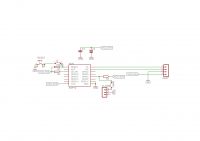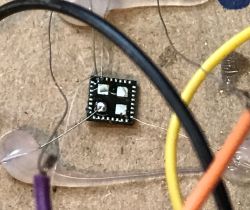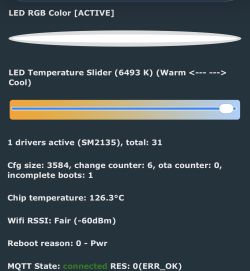Hello
I wanted to design my own board with ESP8266. First I wanted to check if on this version ( version 12 with antenna socket and antenna ).
I connected according to the schematic below
 .
.
During programming I shorted GPIO0 to Gnd, then Reset and with ESPEasy Flasher I uploaded the file ESPEasy_v2.0.0-dev12_normal_4096,bin.
Later I disconnected GPIO0 and reset, a new network should appear, but I wait several minutes and nothing.
I've looked at the NodeMcu schematic and the only difference I can see is that there is no 10K resistor on GPIO2 on mine. AND that GPIO15 is shorted directly to Gnd on mine and not via a resistor. Before I start cutting GPIO15 off from Gnd ( I have it all on a board with a 2.0mm raster connector ) I wanted to ask if, according to my colleagues, this should work, or does this version of the module require a different batch ?
I wanted to design my own board with ESP8266. First I wanted to check if on this version ( version 12 with antenna socket and antenna ).
I connected according to the schematic below
 .
.
During programming I shorted GPIO0 to Gnd, then Reset and with ESPEasy Flasher I uploaded the file ESPEasy_v2.0.0-dev12_normal_4096,bin.
Later I disconnected GPIO0 and reset, a new network should appear, but I wait several minutes and nothing.
I've looked at the NodeMcu schematic and the only difference I can see is that there is no 10K resistor on GPIO2 on mine. AND that GPIO15 is shorted directly to Gnd on mine and not via a resistor. Before I start cutting GPIO15 off from Gnd ( I have it all on a board with a 2.0mm raster connector ) I wanted to ask if, according to my colleagues, this should work, or does this version of the module require a different batch ?





